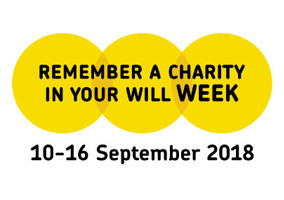With legacy income reaching almost £3bn in the UK last year, understanding more about people’s motivations for leaving gifts in wills is surely vital for getting legacy fundraising right. Charities typically have a clear understanding of their own donor motivations and connection with the cause, but do we know enough about the legacy decision-making process and what that means for fundraising?
Having recently completed a comprehensive literature review here at the University of Plymouth for Legacy Voice, which aimed to summarise everything that research can tell us about legacy giving, it’s apparent that there’s been remarkably little published research on the precise decision-making process that leads supporters to write a charity into their will.
Over the last decade, research has done much to further our understanding of who leaves gifts in wills, and why they do so.
This research can be incredibly valuable to practitioners who can use its insights to build legacy fundraising campaigns which reach the most likely donors, and, importantly, address those donors’ motivations and help meet their needs. Indeed, a number of charities have built fantastic, creative campaigns which align beautifully with these motivations, such as Unicef’s personalised legacy timeline campaign and this advert from Guide Dogs, designed to appeal to those who have always loved dogs.
Trigger events
In terms of when people give, of course we understand that there are various trigger events in life that may lead people to choose to write or amend their will, such as when people marry, have children, divorce or suffer bereavement.
But how does the decision to donate fit into their broader decision about writing a will? In what order does the decision-making process unfold? What’s the particular role of charity communications in the donor’s journey? The more we can understand about the actual process our donors go through, the more we as charities can seek to add value to it.
Although a relatively small part of the overall project, my PhD research offers an intriguing hint as to donors’ decision-making. Contrary to the perception that people tend to choose a specific charity at the front end of the legacy giving process, interviewees suggested that they first decided to leave a gift to charity (in the broadest sense of the word), before then deciding to leave money to a specific cause and finally, structuring their giving in such a way as they believed would make the greatest impact on that cause.
That is not to say that legacy giving isn’t often the culmination of a committed supporter relationship. However, it’s important to remember that our donors probably care less about the charity itself, and much more about our beneficiaries and the difference that their legacy giving will make to them.
Should this same process play out in a wider audience, there are some important implications for charities, several of which go beyond the purview of the individual legacy fundraiser to the wider fundraising team, and ultimately the wider organisation.
If the first stage of the process is deciding to give to charity per se, then extra weight is added to the work of Remember A Charity in promoting the concept of legacy giving, and aiming to achieve the kind of cultural change that no charity can achieve on their own. With just 6 to 7 per cent of people currently leaving a gift to charity, there is a huge opportunity for the sector to grow this figure, and thus income for our beneficiaries. So there is real impetus for any charity who wants to grow their legacy fundraising to get involved.
Focus on rebuilding trust amongst the public again
As a sector, we need to focus on continuing to rebuild trust amongst the public, again, both collectively and individually, committing to the highest standards of practice. That way donors can be sure that a gift to charity is one which will be spent effectively and will make a difference to the world they leave behind.
If people then go on to choose a specific cause, and structure their giving in a way that will make the biggest impact upon it, our organisations need to focus at brand level to ensure that they are clearly aligned with a specific cause in donors’ minds. We need to be absolutely clear about who we are, who we serve and why we do it, and share that clear message through all our communications channels.
Although there is a need for further research to help us understand the process of making a legacy decision in more depth, this thinking is a useful starting point for seeking to add value to donors’ experiences as they think about leaving a gift in a will.
Dr Claire Routley is the founder and fundraising consultant at Legacy Fundraising, tutor for the Institute of Fundraising’s qualification courses and research fellow at Plymouth University’s Hartsook Centre for Sustainable Philanthropy.
Related articles












